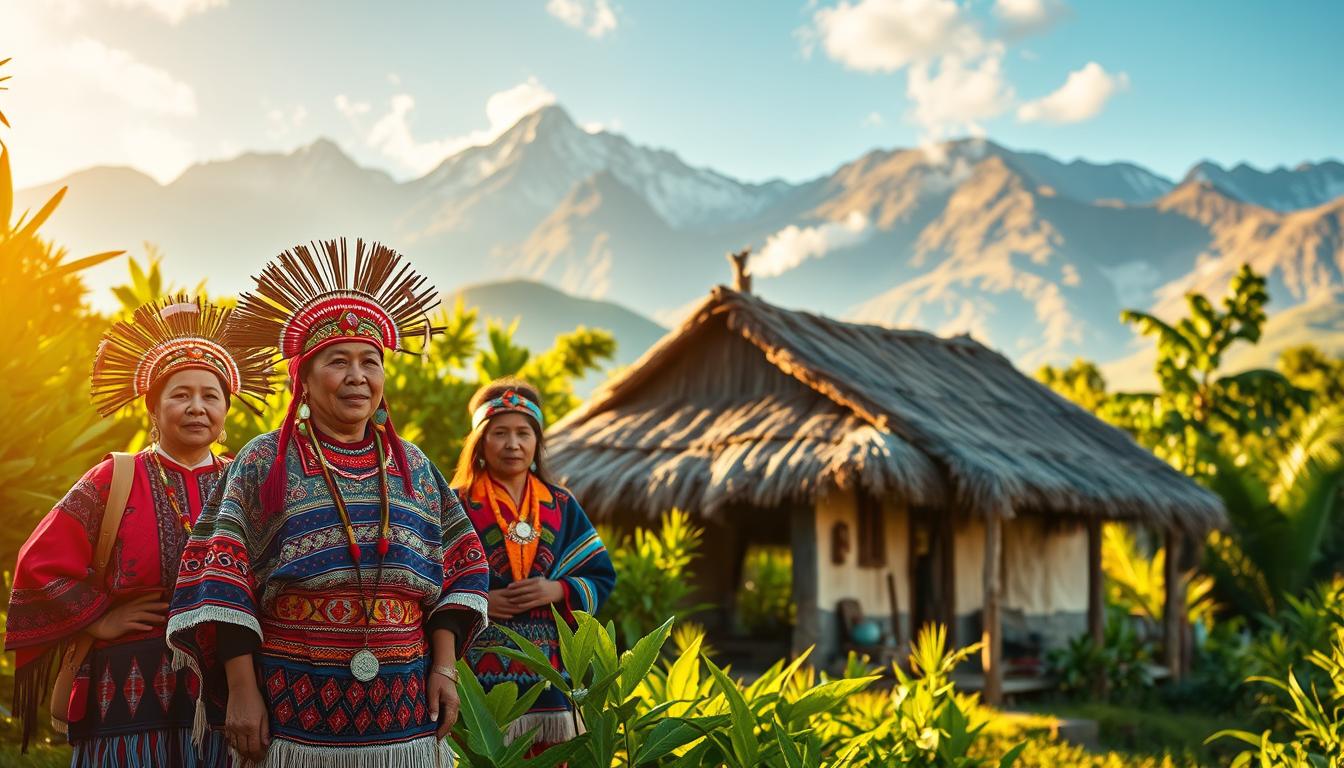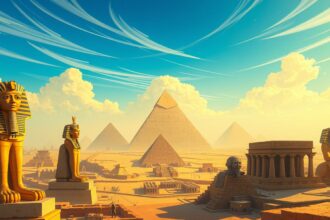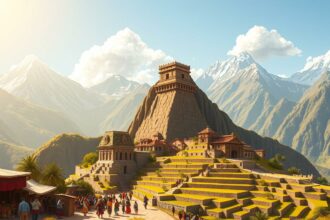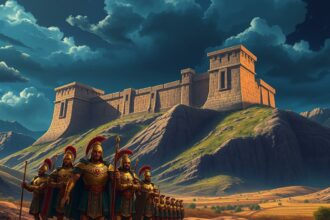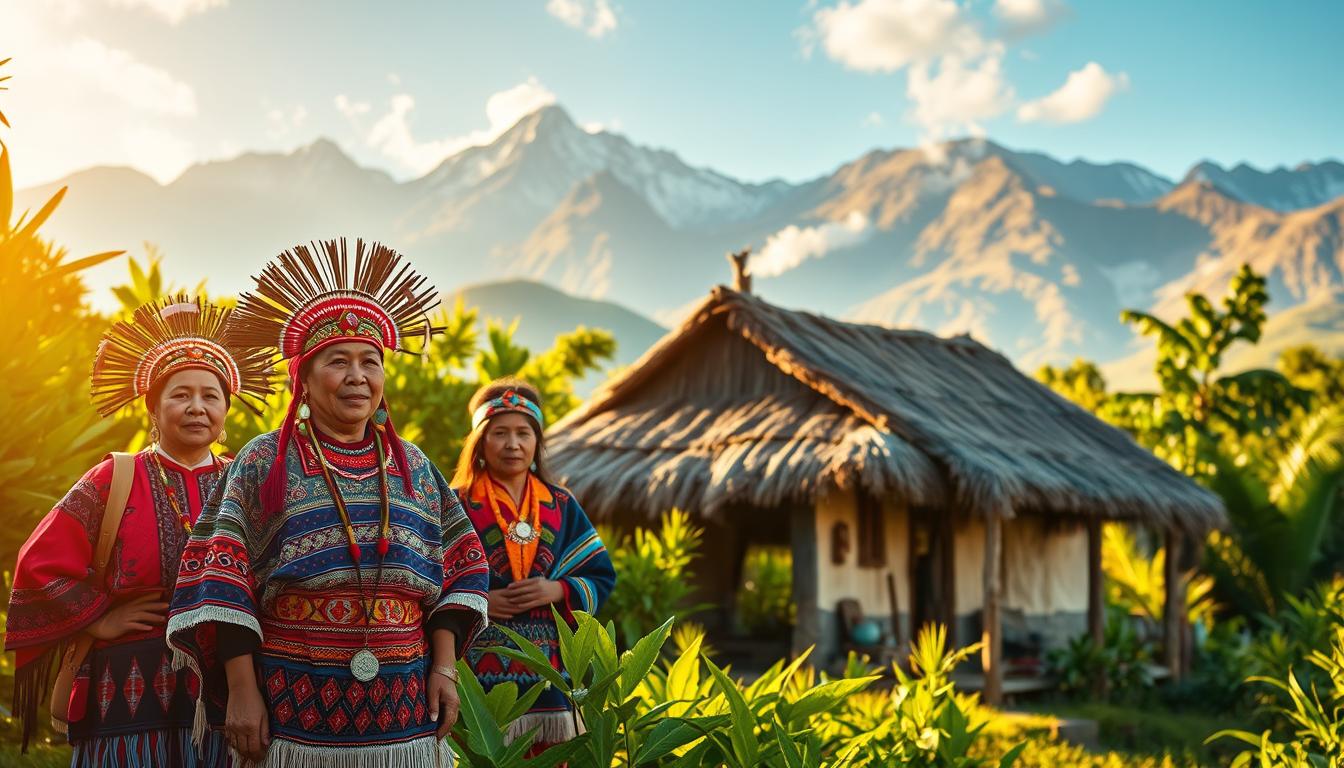
Did you know nearly 8% of Ecuador’s population proudly identifies with ancestral roots dating back 11,000 years? Genetic studies reveal a fascinating blend of Indigenous, European, and African ancestry in modern Mestizo communities—proof of a rich, layered history.
From ancient Lithic-era tools to the philosophy of Sumak Kawsay («good living»), these cultures have shaped Ecuador’s identity. Their resilience offers lessons in sustainability and community—values more relevant today than ever.
Ready to explore how deep these traditions run? Let’s uncover the stories behind the statistics.
Who Are the Indigenous Peoples in Ecuador?
Across misty highlands and lush rainforests, diverse ethnic groups preserve ancient ways of life. These communities—guardians of 11,000 years of heritage—blend tradition with modern resilience. Their stories reveal a tapestry of survival, innovation, and deep ecological wisdom.
Definition and Historical Presence
Ancestral nationalities here aren’t just cultural labels—they’re living legacies. Groups like the Shuar and Chachi trace lineages to pre-Columbian eras. Sumak Kawsay (“good living”) isn’t philosophy; it’s their daily blueprint for harmony with nature.
Demographics and Population Distribution
Nearly 1.1 million identify with these roots, clustered in three regions:
- Andes: Kichwa communities farm terraced slopes.
- Amazon: The Waorani defend biodiversity hotspots.
- Coast: Chachi sailors navigate ancestral trade routes.
Major Ethnic Groups and Their Stories
CONAIE, Ecuador’s largest advocacy group, unites 14 nationalities. Meet three standouts:
«The Shuar were feared as head-shrinkers, but their real power? Mastering 100 medicinal plants.»
The Cofán of Sinangoe patrol their lands with drones, merging tradition with tech. Meanwhile, the Tsáchila, recognized by vivid red hair dye, heal with sacred botanicals.
The Rich History of Ecuador’s Indigenous Communities
Long before modern borders existed, ancestral cultures thrived in Ecuador’s diverse landscapes. Their legacy, etched in stone and soil, reveals a saga of innovation and resilience. Let’s unravel these layers—one era at a time.
Archaeological Periods: From Lithic to Integration
The Lithic era (13,000 BCE) left behind razor-sharp obsidian tools. By the 15th century, the Integration Period saw trade networks span the Andes. Key milestones:
| Period | Timeframe | Key Development |
| Formative | 3500–500 BCE | First pottery & agriculture |
| Regional | 500 BCE–500 CE | Monumental earthworks |
| Integration | 500–1500 CE | Pan-Andean trade routes |
Pre-Inca Civilizations and Their Legacy
The Cañari of the southern highlands baffled invaders with their guerrilla tactics. Meanwhile, the Quitu-Caras conflict weakened regional unity—a fateful rift later exploited by outsiders.
«The Cañari’s terraced farms were engineering marvels, adapting to slopes steeper than 60 degrees.»
The Inca Conquest and Its Impact
Topa Inca’s naval expedition to the Galápagos in the 1400s marked their vast reach. The mitma system relocated entire communities, like the Saraguro, reshaping ethnic maps. Yet their terrace farming techniques still feed Andean valleys today.
Why does this matter? Because these stories aren’t just history—they’re the foundation of Ecuador’s identity.
Cultural Heritage and Traditions
Edit
Delete
Ceramics older than the pyramids hold secrets of ancient artistry. From the Valdivia culture’s 6,250-year-old pottery to the Otavalo market’s bustling textile stalls, every craft whispers a legacy. You’ll discover how traditions blend spirituality, skill, and storytelling.
Languages and Linguistic Diversity
Over a dozen ancestral languages thrive here. Kichwa, the most widely spoken, carries Incan influences. In Amazonian areas, the Waorani language uses unique whistles to mimic jungle sounds—a fading art now taught in schools.
Religious Beliefs and Practices
Sacred volcanoes and healing plants anchor spiritual life. Shamans, called yachaks, still perform rituals with coca leaves. Ever wondered how festivals blend Catholic saints with Pachamama (Earth Mother) worship? The Inti Raymi sun ceremony reveals this fusion.
Traditional Arts, Crafts, and Ceramics
Try deciphering symbolic jaguars in Salasaca tapestries—each knot holds meaning. Coastal artisans carve tagua nuts into intricate figurines, while Chordeleg’s filigree jewelry echoes pre-Columbian metallurgy. Below, compare iconic ceramic styles:
| Style | Origin | Signature Technique |
| Valdivia | Coastal | Coiling pottery |
| Panzaleo | Highlands | Black-on-red geometric designs |
| Chorrera | Guayas Basin | Whistling bottles |
“Panama hats—actually from Ecuador—take 6 months to weave. UNESCO honored this activity in 2012.”
Economic Systems and Livelihoods
From forest hunts to ocean harvests, traditional livelihoods reveal genius-level sustainability. These systems didn’t just feed communities—they balanced ecosystems for millennia. Let’s decode their secrets.
Ancient Trade Networks and Markets
Before coins existed, cacao beans and spondylus shells were currency. The Amazon region’s trails connected to Andean highlands, trading salt for obsidian. Coastal areas bartered dried fish with mountain quinoa—a protein-carb exchange older than Wall Street.
“Manta whale hunters sang to the spirits before harpooning. Every part was used: meat for food, bones for tools, oil for light.”
Agriculture: From Multicyclic Farming to Modern Challenges
Multicyclic farming meant growing corn, beans, and squash together. Corn stalks supported bean vines, while squash leaves shaded soil. Today, monocrops threaten this balance. Yet in Saraguro, farmers still rotate plots to let earth breathe.
The Role of Fishing and Hunting
Blowguns or nets? Techniques varied by terrain. See how ancestral methods stack up against modern pressures:
| Method | Tool | Sustainability Rule |
| Amazon hunting | Blowgun + curare | Never kill pregnant animals |
| Coastal fishing | Handwoven nets | Follow lunar tide cycles |
| Andean trapping | Stone snares | Release juveniles |
Oil spills now poison Esmeraldas’ waters, but elders teach spearfishing—only take what you need. Hunting taboos? They’re why the Cofán’s areas still teem with tapirs.
Political Organization and Social Structures
Leadership here isn’t about power—it’s about sacred responsibility. For centuries, ancestral groups built systems where nature and community held equal votes. Today, these models fuel some of Latin America’s most powerful activism.
The Ayllu System and Community Governance
Ever seen a democracy where Earth has voting rights? The ayllu works just like that. Families collectively manage land, water, and forests through assemblies. Decisions require consensus—sometimes taking days of debate.
Modern cooperatives still use this model. In Cotacachi, farmers vote on crop rotations while honoring Pachamama. It’s slower than corporate farming but prevents ecological disasters.
Curacazgo and Cacicazgo: Traditional Leadership
Curacazgo? Think tribal CEO meets spiritual guide. Pre-Inca rulers balanced military strategy with astrology readings. Their modern equivalents—like Saraguro leaders—still wear symbolic ponchos during negotiations.
Key traits survive today:
- Wealth measured by communal wellbeing
- Leaders must excel in public service
- Authority revoked for greed
Modern Indigenous Movements and CONAIE
The confederation indigenous nationalities (CONAIE) reshaped Ecuador since 1986. This indigenous movement united 14 groups under one demand: a plurinational state. Their 2022 strike paralyzed highways for 18 days, forcing fuel price controls.
«Social media became our blowgun,» says Amazon activist Nina Gualinga, whose viral videos exposed oil spills.
Women now lead 40% of ECUARUNARI’s councils—a radical shift. Meanwhile, the Sinangoe legal victory proved drones and lawyers can defend ancestral lands better than spears.
The Spanish Conquest and Colonial Era
When Spanish ships first appeared on the horizon, ancestral societies faced an irreversible turning point. The collision of worlds reshaped everything—from faith to family structures—leaving scars still visible today. Yet within this upheaval, remarkable stories of resilience emerged.
Resistance and Adaptation
The encomienda system forced labor in mines and textile workshops, but clever adaptations saved cultures. Parish records show how shamans hid Andean symbols in Catholic saints’ robes. Quipus (knotted cords) secretly preserved census data the Spanish tried to erase.
African slaves and local groups blended traditions in coastal areas. Their descendants created marimba music—now a UNESCO treasure. Meanwhile, the Jesuits’ Quichua language push had unintended results: it became a unifying tongue for rebellion.
Impact on Populations and Cultures
Diseases wiped out up to 90% of some communities by the 1600s. Survivors faced brutal changes:
- Forced relocations to work silver mines
- Traditional lands given to colonists
- Children taken for mission schools
Yet the mita labor system couldn’t destroy everything. As noted in Britannica’s colonial period analysis, Quichua became a tool for both control and cultural preservation. Today’s vibrant Inti Raymi festivals prove ancestral cosmovision never truly disappeared—it just wore new disguises.
“We wove our gods into the Virgin’s cloak,” explains a Saraguro elder, pointing to sun symbols hidden in church murals.
The colonial era’s end didn’t stop struggles—1960s land grabs repeated history. But each generation finds new ways to honor the past while fighting for the future.
Indigenous Peoples in the Republican Era
The republican era brought new threats to ancestral ways of life. From rubber exploitation to flawed land reforms, communities fought to protect what colonialism hadn’t taken. Their victories today stem from generations of resistance.
Rubber’s Blood-Stained Legacy
Between 1870-1920, rubber barons enslaved thousands in the Amazon. Forced to harvest latex, many died from disease or violence. Entire villages disappeared—their territories seized for plantations.
Survivors developed covert resistance tactics:
- Sabotaging rubber trees with axe marks
- Creating false trails to confuse captors
- Preserving oral maps of sacred sites
When Land Reforms Failed
The 1964 Agrarian Reform broke up haciendas but ignored collective ownership. Individual titles replaced communal systems, leaving many without legal claims. This oversight sparked decades of conflict.
“We reclaimed land through invasions,” recalls a Kichwa elder. “The law called us squatters—we called it justice.”
Modern tools now aid these efforts. See how traditional and legal approaches compare:
| Method | Era | Impact |
| Physical occupations | 1960s-90s | High risk, temporary gains |
| GPS mapping | 2000s-present | Court-admissible territory proof |
| Constitutional appeals | Post-2008 | Permanent legal recognition |
Oil concessions still overlap 38% of protected ancestral zones. But with drones documenting violations and courts recognizing rights, the balance is shifting.
Contemporary Challenges Facing Indigenous Communities
Behind the vibrant festivals and colorful textiles lies a harsh reality of modern struggles. While ancestral wisdom survives, new threats test resilience daily. These challenges reveal gaps between legal rights and lived experiences.
Resource Exploitation: Oil, Mining, and Deforestation
Extractive industries overlap with 38% of protected ancestral zones. The country’s oil operations have left 30,000 suffering from related cancers. Did you know one spill can poison water sources for generations?
Modern mining brings similar dangers:
- Mercury contamination in Amazon rivers
- Sacred mountains blasted for minerals
- Forest loss equivalent to 60 soccer fields daily
Legal Battles and Environmental Justice
Communities now fight back with drones and lawsuits. The Sinangoe victory set a precedent—courts halted 52 mining concessions. But legal wins require constant vigilance.
«We document every tree cut and river poisoned,» explains a Kichwa land defender. «Our evidence must be bulletproof.»
Health and Education Disparities
The population faces healthcare gaps few outsiders see. Maternal mortality rates triple the national average in some regions. Meanwhile, 11.9% illiteracy persists versus 1.6% in urban centers.
Creative solutions are emerging:
- Bilingual schools teaching ancestral languages
- Clinic partnerships with traditional healers
- Community radio lessons during pandemic lockdowns
These struggles aren’t just about survival—they’re about rewriting the rules of development. When forests thrive, so
Indigenous Rights and Legal Frameworks
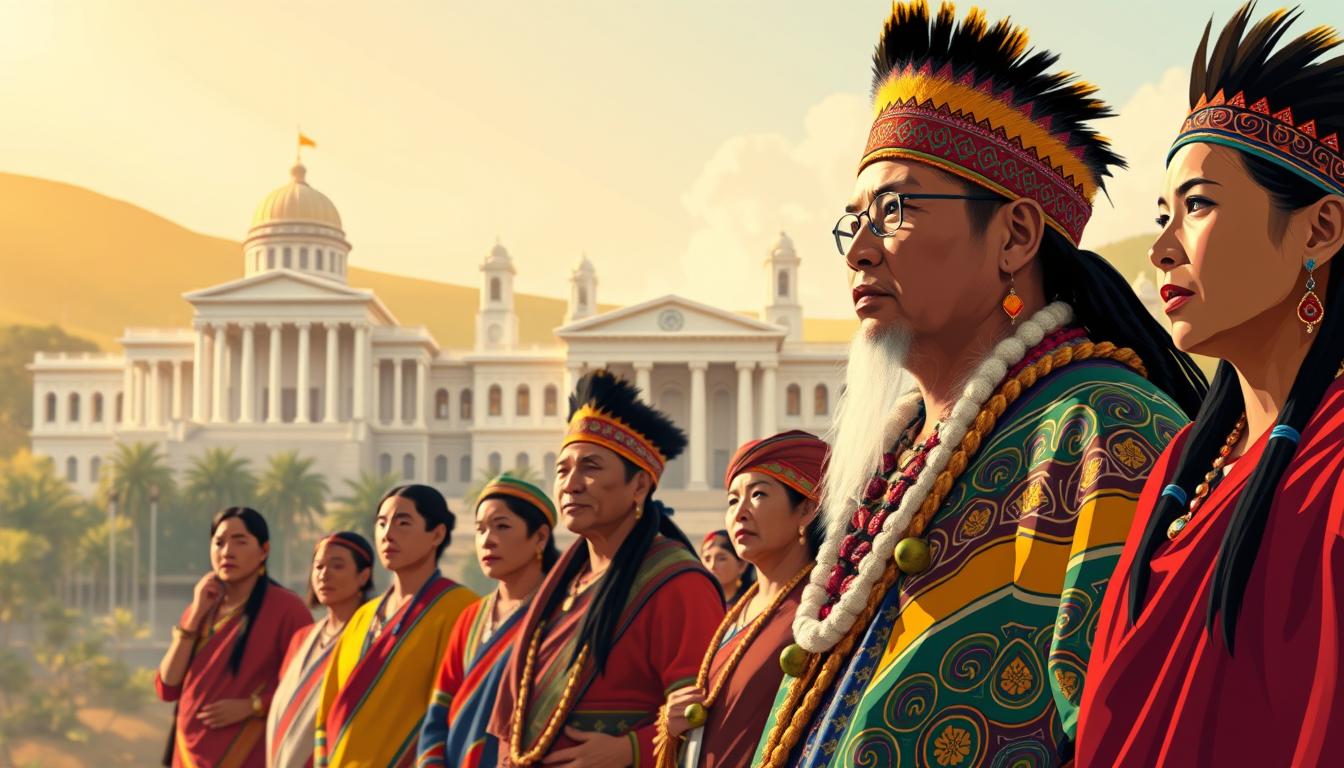
Edit
Full screen
Delete
A vibrant illustration depicting the legal framework safeguarding the rights of indigenous peoples in Ecuador. In the foreground, a group of indigenous leaders stand resolute, their traditional garments and expressions conveying a sense of dignity and determination. In the middle ground, a backdrop of government buildings and courthouses symbolizes the institutional structures that protect their rights. The scene is bathed in warm, golden light, evoking a sense of hope and progress. The composition is balanced, with the figures and architectural elements creating a harmonious, visually striking arrangement.
Justice isn’t just written in law books—it’s fought for in courtrooms and communities. Across Ecuador, indigenous nationalities have secured groundbreaking legal wins. These victories redefine how ancestral lands and traditions are protected.
Constitutional Recognition and Sumak Kawsay
Ecuador’s 2008 Constitution made history. It recognized Sumak Kawsay («good living») as a legal principle. This gives communities rights to:
- Manage their territories sustainably
- Practice ancestral medicine and education
- Participate in resource decisions
ILO Convention 169 and Free, Prior, and Informed Consent
International laws now back local demands. ILO Convention 169 requires governments to consult communities before projects begin. The catch? Consent must be:
| Requirement | Example |
| Free | No bribes or threats |
| Prior | Before permits are issued |
| Informed | Full project details shared |
| Consent | Community majority agreement |
“We don’t just say yes or no—we negotiate terms,” explains A’i Cofán leader Alex Lucitante. His people halted mining by mapping sacred sites with GPS.
Case Studies: Sinangoe and Other Legal Victories
The 2018 Sinangoe ruling canceled 52 gold mining concessions. Why? Because the government never consulted the community. This win inspired others:
- Waorani blocked oil drilling in 2019
- Kichwa secured clean water rights in 2021
- 2022 Constitutional Court reaffirmed these precedents
Drones now monitor illegal logging. Community paralegals track violations. These tools turn ancestral wisdom into courtroom evidence—protecting cultures for future generations.
The Role of Indigenous Peoples in Modern Ecuador
From presidential speeches to fashion runways, ancestral influence is everywhere. This heritage contributes 25% of Ecuador’s GDP through agriculture, tourism, and crafts. Their impact reshapes everything from environmental policies to runway trends.
Political Influence and Social Movements
Did you know ancestral governance models now inspire national policies? The ayllu system of collective decision-making influenced 2022’s water protection laws. Movements like CONAIE have:
- Secured bilingual education in 14 languages
- Won 78% of land rights cases since 2010
- Pushed constitutional recognition of nature’s rights
Youth activists blend tradition with tech—using TikTok to protest mining while elders lead ceremonial marches.
Contributions to National Identity and Culture
Ecuador’s global brand leans heavily on this living heritage. Consider these impacts:
«Our agrobiodiversity feeds the world,» says chef Rodrigo Pacheco. «Quinoa and 3,000 potato varieties originated here.»
Gastronomy tourism boomed by 140% after UNESCO honored Andean cuisine. Meanwhile, Otavalo textiles walk Paris runways, and sanjuánitos music streams globally.
The Inti Raymi sun festival became a national holiday in 2017. It’s not just ceremony—it’s a $28M annual economic driver. Every element, from sacred corn beer to wool ponchos, tells a story of resilience.
Preserving Indigenous Cultures for the Future
Ancient knowledge faces its greatest test yet in the digital age. While 4.1% of youth leave school early, innovators are fighting back with surprising tools. From TikTok language lessons to drone-monitored sacred sites, survival strategies are evolving.
Breathing New Life Into Traditions
Communities are turning threats into opportunities. The people of Saraguro now stream weaving tutorials, reaching diaspora youth globally. Meanwhile, Kichwa rap battles make language learning viral.
Key revitalization projects include:
- Memory banks: Recording elders‘ stories with 360° video
- Craft NFTs: Protecting textile designs via blockchain
- Climate-smart farming: Blending ancestral and modern techniques
«Our grandmothers‘ songs are now Spotify playlists,» says educator Marisol Gualán. «If we don’t adapt, traditions end with our generation.»
When Progress Becomes Peril
Evangelical conversions erase spiritual practices faster than colonialism did. In coastal areas, 1 in 3 youth can’t name their clan’s origin story. Social media’s double edge:
| Threat | Solution |
| Language loss | Duolingo-style apps for Shuar |
| Craft decline | Etsy partnerships for artisans |
| Land disputes | Drone mapping of territories |
Intellectual property battles rage too. A French designer recently trademarked Achuar face paint patterns—until community lawyers intervened. Now, 78 designs have international protection.
The race isn’t just about saving traditions. It’s about letting them evolve without losing their soul. When children learn coding and quipu knot-writing, that’s true resilience.
Conclusion
Resilience isn’t just survival—it’s thriving against all odds. For 11,000 years, Ecuador’s indigenous peoples have turned challenges into strengths. Their time-tested strategies—from terraced farming to collective governance—offer blueprints for sustainable living.
Urgent work remains. Implementing FPIC (Free, Prior, Informed Consent) protects ancestral lands from exploitation. Balancing cultural preservation with economic needs fuels progress. You’ll see this in community-led tourism and artisan cooperatives.
New leaders emerge daily. Youth blend tradition with tech, using drones and apps to defend territories. Their energy revitalizes ancient wisdom for modern battles.
Global solidarity matters. Supporting these efforts ensures indigenous peoples worldwide keep shaping our shared future. Their stories aren’t history—they’re living lessons in resilience.

